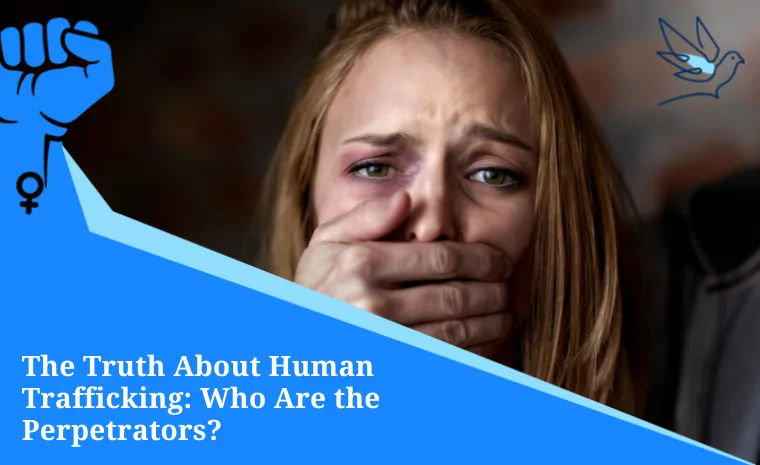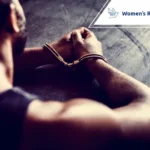The Truth About Human Trafficking: Who Are the Perpetrators?
Human trafficking, a heinous crime that has plagued societies for centuries, continues to be a global issue in the modern era. Despite concerted efforts to combat it, the identity and characteristics of those behind this abhorrent trade remain shrouded in mystery.
Often described as modern-day slavery, human trafficking encompasses a range of exploitative practices, including forced labor, sexual exploitation, and domestic servitude. It thrives on the vulnerability of its victims, preying on those marginalized by societal inequalities, poverty, and lack of opportunities.
Understanding the intricate dynamics of this crime necessitates an exploration of the perpetrators behind its malevolent operations. Join us in today’s blog to discover the truth about human trafficking and the signals to identify authors who perform this atrocious crime.
Together, we can fight!
Raise your voice and ask for help.
What Constitutes Human Trafficking?
At its core, human trafficking involves the recruitment, transportation, and exploitation of individuals through force, fraud, or coercion. It thrives on the deprivation of basic human rights and preys on the vulnerable, exploiting their labor or subjecting them to sexual exploitation.
At present, different forms of trafficking are conducted in the world, having California as one of the major states in the USA where the traffickers can easily navigate their actions, even with business and commercial establishments help.
Who Are the Perpetrators of Human Trafficking?
Human traffickers operate through various structures, ranging from large organized criminal networks to individuals seeking to profit from the exploitation of others.
Criminal Organizations
Organized crime groups often engage in human trafficking as part of their illicit activities. These organizations can range from large transnational criminal networks to smaller, more localized groups. They profit from trafficking victims by forcing them into various forms of labor, such as agriculture, construction, or the commercial sex industry.
Individual Traffickers
Not all perpetrators are part of organized criminal networks. Some individuals, driven by financial gain or personal motives, engage in trafficking. These human and sex traffickers may exploit their family members or recruit victims from vulnerable communities, using even their own homes as trafficking establishments.
Corrupt Officials
Human smuggling is often facilitated by corrupt law enforcement, immigration, and government officials. These individuals may accept bribes or turn a blind eye to trafficking activities, allowing traffickers to operate with impunity.
Recruiters and Brokers
Traffickers often rely on recruiters and brokers to find and transport victims. These intermediaries may be aware of the trafficking or may themselves be deceived by the traffickers. They play a crucial role in the process, as they can identify vulnerable individuals and lure them into trafficking situations.
Customers and End Users
In cases of sex trafficking, the customers who pay for sexual services provided by trafficking victims are also considered perpetrators. Without a demand for such services, sex trafficking would be less profitable.
Employers and Businesses
Some businesses knowingly or unknowingly exploit trafficked individuals for cheap labor. These businesses may operate in industries like agriculture, domestic work, or manufacturing, where workers are vulnerable to exploitation.
Family Members
In cases of child trafficking, family members or caregivers may play a role in exploiting their children or relatives. This could involve selling a child into forced labor or sexual exploitation due to financial desperation or coercion. Child sex trafficking is a hideous crime that can change the life of the minor forever, leading to trauma, social and communication problems, and even disease.
Online Predators
With the rise of the internet, human traffickers also utilize online platforms to recruit, groom, and exploit their victims. These online predators may target vulnerable individuals, particularly children and teenagers.

Methods and Tactics Employed by Human Traffickers
Human traffickers often employ various deceptive methods and coercive tactics to exploit individuals for labor trafficking, sexual exploitation, or other forms of exploitation. Some common strategies and tactics used by human traffickers include:
- Deception and Fraud: Traffickers may use false promises of a better life, employment opportunities, or education to lure victims into trafficking situations. They might misrepresent job offers or marriage proposals to manipulate individuals into exploitative situations.
- Coercion and Threats: Traffickers often use threats, intimidation, emotional abuse, and psychological manipulation to control victims. This can include threats of violence against the victim or their loved ones, as well as threats of deportation or legal repercussions if the victim attempts to escape.
- Isolation and Control: Traffickers isolate victims from their support networks, such as family and friends, to minimize the chances of escape. They may confiscate identification documents, restrict communication, and control the victim’s movements to maintain dominance and control over them.
- Physical and Sexual Harm: Physical and sexual violence are frequently used by traffickers as a means of asserting control and instilling fear in victims. They may subject victims to physical harm, rape, or other forms of sexual abuse, thereby undermining their ability to resist or escape.
- Bondage Debt: Traffickers often exploit individuals by trapping them in a cycle of debt bondage. They may force victims to work to repay exaggerated debts, imposing impossible repayment terms and using debt manipulation as a tool of control.
- Manipulation of Vulnerable Groups: Traffickers target vulnerable groups such as children, migrants, runaways, and individuals with unstable socio-economic backgrounds. They exploit their vulnerabilities, such as lack of social support, limited economic opportunities, or unstable living conditions, to coerce them into trafficking situations.
- Online Exploitation: With the increasing use of the internet, traffickers have adapted by exploiting online platforms for recruitment and exploitation. They may use social media, online classifieds, and other digital platforms to lure victims and facilitate trafficking activities.
Are You Being Trafficked?
Strategies for Combating Human Trafficking
The truth about human trafficking and its repercussions extend beyond individual victims, permeating through communities and leaving lasting socio-economic and psychological scars. Efforts to combat human trafficking must be multi-faceted, combining international cooperation, legislative measures, and stringent enforcement to dismantle the networks that perpetrate this crime.
Raising Awareness and Education
Implementing educational programs to raise wider awareness about the types of trafficking and the risks, as well as the indicators within communities, schools, and vulnerable populations, and promoting public campaigns to educate people about the realities of trafficking and its impact on individuals and society.
Strengthening Legal Frameworks
Enacting and enforcing comprehensive anti-trafficking laws that criminalize all forms of human trafficking, provide adequate protection for victims, and ensure that traffickers are prosecuted and appropriately punished.
Enhancing Law Enforcement Efforts
Providing specialized training for law enforcement officials to improve their capacity to identify, investigate, and prosecute human trafficking cases effectively. Collaboration among law enforcement agencies at the local, national, and international levels is crucial for combating the cross-border nature of human trafficking.
Protecting and Supporting Victims
Establishing and funding victim-centered support services, including shelters, counseling, legal aid, and rehabilitation programs, to provide comprehensive assistance to survivors of trafficking. It is essential to prioritize the safety and well-being of human trafficking victims, ensuring their access to necessary services without fear of retribution.
Addressing Root Causes
Tackling the underlying socio-economic factors that make individuals vulnerable to trafficking, such as poverty, lack of education, unemployment, and social marginalization. Implementing programs that promote sustainable livelihoods, education, and social inclusion can help prevent individuals from falling prey to traffickers.
Collaboration and Partnerships
Fostering partnerships and collaboration between governments, civil society organizations, and international entities to share information, resources, and best practices in combating human trafficking. Coordinated efforts at the local, national, and international levels are crucial for effectively addressing the transnational nature of human trafficking.
Regulating and Monitoring Supply Chains
Implementing regulations and monitoring mechanisms to ensure that businesses and industries adhere to ethical labor practices and do not engage in the exploitation of vulnerable workers. Promoting transparency and accountability in global supply chains can help prevent the use of forced labor and trafficking in the production of goods and services.
Frequently Asked Questions About Human Trafficking
How can individuals contribute to combating human trafficking?
By remaining vigilant and reporting any suspicious activities or signs of exploitation, individuals can play a crucial role in aiding collaborative efforts against human trafficking.
Are there any sectors particularly vulnerable to human trafficking?
Industries such as agriculture, domestic work, and the sex trade are often associated with higher risks of human trafficking due to the demand for cheap labor and services.
What role does technology play in combating human trafficking?
Technology has proven instrumental in tracking and monitoring the movements of trafficking networks, aiding law enforcement agencies in identifying and dismantling these criminal operations.
What support systems are available for survivors of human trafficking?
Various organizations and NGOs provide comprehensive support services, including counseling, shelter, legal help, and vocational training, to help survivors reintegrate into society and rebuild their lives.
How can communities raise awareness about human trafficking?
Communities can organize awareness campaigns, workshops, and educational programs to disseminate information and empower individuals to identify and report instances of human trafficking.
Break Free From the Chains of Human Trafficking! We Are Here To Help You
Human trafficking remains a grave violation of human rights, preying on the vulnerable and marginalized. Unfortunately, these illegal activities continue in the United States, especially in California, which with its proximity to the border and millions of people seeking the American dream, fall prey to this terrible crime of exploitation.
Victims of trafficking have the right to seek justice and recover their freedom. At Women’s Rights Group, we offer a new opportunity for victims who want their lives back, providing resources and legal assistance to obtain justice and fair compensation for the trauma and emotional scars they have to endure. You are not alone. Call our 24/7 human trafficking hotline for support and let us be your lifeline to freedom. Your strength is your power. Make the call today.






